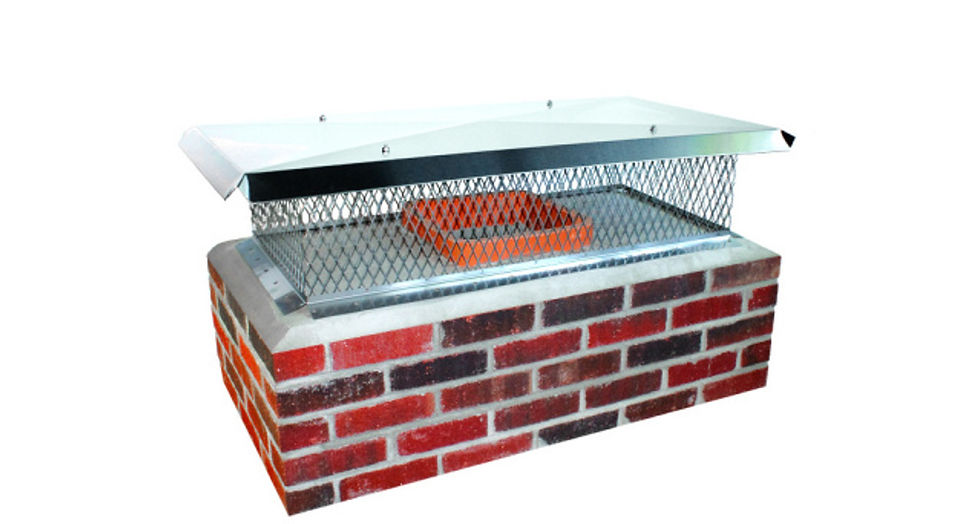Leaky Chimney Causes & Fixes!
- Jonathan N.

- Jan 20, 2023
- 3 min read

There is nothing more annoying than a water leak in your house. One of the potential sources of a water leak is the chimney. There are many causes for what may cause your chimney to leak. While the following may not be an all inclusive how to repair your chimney, we will touch upon the most common causes and effective ways to eliminate them as a source of your water issues.
Let's first get acquainted with the anatomy of a chimney and then dive into the three most common causes for a leaky chimney.

Cause #1: Leaking through the Bricks or mortar joints

Bricks and mortar are porous and may be absorbing too much water.
Older bricks and even newer brick are porous. Usually this is not a problem as it takes a fair amount of water to pass through the bricks. Unfortunately, sometimes when it rains, it pours and keeps pouring.
Or perhaps you live by the ocean or in an area with predominate wind that drive the rain into the chimney. The bricks and mortar joints will become inundated with water and may leak.
Sealing your chimney is a proven way to help minimize this. We stock Siloxane PD, a breathable water-based sealer. The important part of this is that the sealer is breathable, which means it allows any trapped water vapor to escape. Being water based, the sealer soaks into the bricks a little deeper, so its best to apply when the bricks are completely dry. The sealer may be sprayed or rolled on. Depending on the porosity of the brick and mortar, multiple coats may be needed. It is important to keep in mind that sealers do not bridge gaps, so if the mortar joints or crown is showing cracks or age, it is best to repair those first.
Sealers may need to be re-applied periodically to ensure its effectiveness.
Cause #2: Cracked or broken crown. Cracked, separated or worn-out mortar joints.

On the very top of the chimney there is a crown, sometimes called a wash, that protects the top of the chimney. Typically made of a sand & cement mixture, the crown is a potential source of water infiltration as it ages and potentially cracks.
Mortar joints age as well, and may crack or become powdery over time. Mortar joints may also separate from the brick over time, causing hair-line cracks along the bedding joints.

After a visual inspection for cracks and
separations, and testing for the hardness of the crown and mortar joints (tapping the joints or crown with a screw driver or an ice pick will allow you to easily determine the hardness) if the mortar joints or crown is determined to have failed, then they must be repaired.
A qualified mason or chimney repair professional may be warranted for this job, as grinding out the joints to repoint the mortar and repairing the crown is a large job and best left to the professionals.
Cause #3: Flashing may be compromised

The chimney is surrounded by lead flashing where the bricks meet the roof. As the chimney ages, the flashing may become separated from the chimney. This may allow water to works its way under the flashing and enter the house.
This is another task that may be best to leave for the professionals. While inspecting the flashing may seem fairly straight forward, by having someone that repairs chimneys all the time might allow them to see if there may be any other roofing issues, for example a cricket failure or perhaps a shingle failure elsewhere that allows the water to get under the shingles, run to the chimney and make it appear that the chimney is at fault when in reality it is a roofing failure.
Cause: Water coming into the firebox
Flue tiles are porous and absorbent. Under the right conditions there is too much water for the flues (and smoke shelf) to absorb. Perhaps the mortar between the flues has failed and water coming down the chimney is leaking through those exposed joints. Or perhaps you may have an older chimney that does not have flues.

A chimney cap could be the solution. Not only to keep out small birds and animals, a chimney cap will help protect the chimney and flues from water infiltration. Most styles are attached directly to the crown and is best handled by professionals as they may also inspect and repair the crown if needed. If you feel like you may want to handle this yourself, please contact us so we may help in picking out the best size cap for your chimney.
There may be other causes that may allow the chimney to leak, these are just a few of the usual suspects. We at TLC Supply will be happy to answer any of your project questions! Go ahead and leave your questions or comments below.
Leaky Chimney Causes & Fixes written by J.N.





Comments